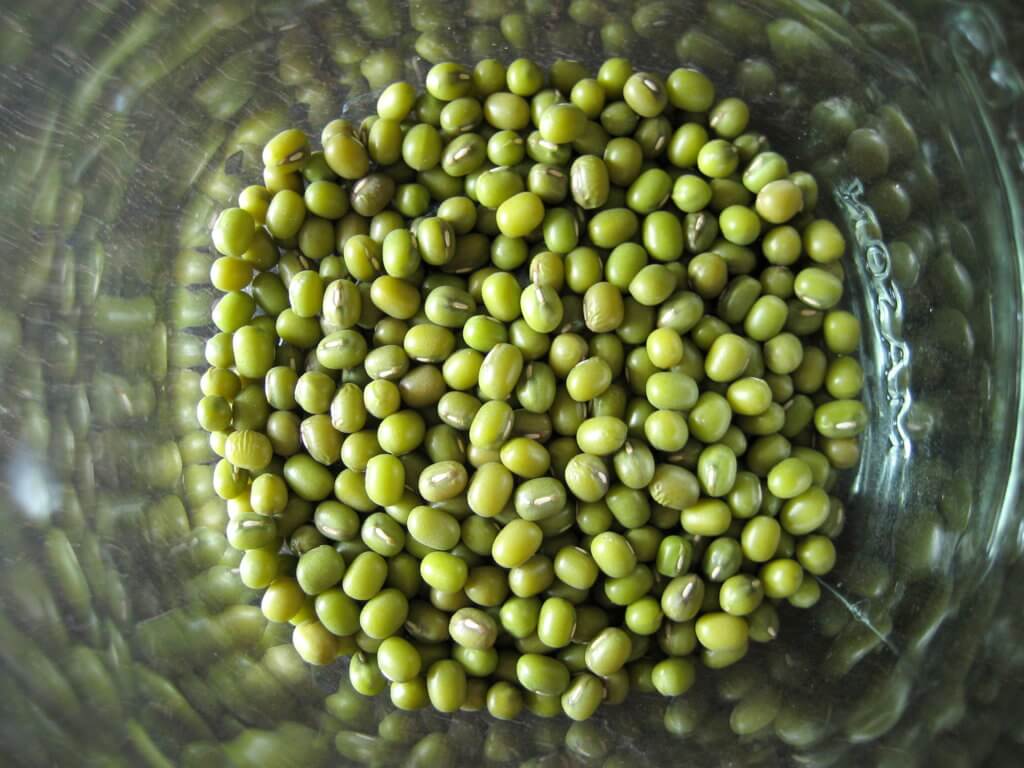You might think all beans are basically the same, but this is one case where that’s not true.
Mung beans and green beans can be used in some of the same recipes, but have very different nutritional content.
This short head-to-head comparison will highlight the differences between these 2 legumes.
Table of Contents
Taste of Mung Bean vs Green Bean

- Mung bean – If you buy bean sprouts, those are likely made from mung beans and have a crisp and crunch texture without much taste. When cooked like regular beans, mung beans have a bit of an earthy texture with a slightly sweet flavor (sometimes used in Asian desserts).
- Green bean – One of the few legumes that are typically eaten raw. They are crunchy and a little bit sweet (can vary based on variety).
Can I Use Mung Bean Instead of Green Bean?
Mung bean sprouts and green beans are pretty good substitutes for each other in most recipes. However, the full mung bean that’s cooked like a typical bean cannot be substituted for green beans with good results.
Nutritional Value Comparison
Legumes soak up a lot of water when they cook, but the fact that green beans are 90% water (by weight) really changes their nutritional value.
We’ll look at the nutritional value per 100 grams of each bean in the following sections.
Macros
Even though the proportion of each main macronutrient compared to overall calories is similar, there’s a big difference in caloric content:
| Mung bean | Green bean | |
|---|---|---|
| Energy (kcal) | 105.0 | 30.9 |
| Protein (g) | 7.0 | 1.8 |
| Total Lipid (g) | 0.4 | 0.2 |
| Carbohydrate (g) | 19.1 | 7.0 |
| Fiber (g) | 7.6 | 2.7 |
| Sugars (g) | 2.0 | 3.3 |
You’d have to eat roughly 3.5 times as many green beans to get the same amount of calories. Most people on plant-based diets struggle to eat enough as it is, so it’s tough to get a lot of nutrition from green beans.
Aside from that:
- Mung beans are high in protein (by percent of calories)
- Green beans have a higher proportion of sugars (hence the sweeter taste)
Vitamins and Minerals
While both green and mung beans have quite a few vitamins and minerals, there are some significant differences.
I’ve ordered them roughly in the order of percent of RDA.
| RDA | Mung bean | Green bean | |
|---|---|---|---|
| Vitamin K (µg) | 75 | 2.7 | 42.9 |
| Folate (µg) | 400 | 158.9 | 32.7 |
| Phosphorus (mg) | 700 | 99.0 | 38.2 |
| Vitamin C (mg) | 90 | 1.0 | 12.2 |
| Thiamin (mg) | 1.2 | 0.2 | 0.1 |
| Potassium (mg) | 2000 | 265.8 | 210.9 |
| Manganese (mg) | 2.3 | 0.3 | 0.2 |
| Magnesium (mg) | 400 | 48.0 | 25.5 |
| Vitamin B-6 (mg) | 1.3 | 0.1 | 0.1 |
| Iron (mg) | 18 | 1.4 | 1.0 |
| Zinc (mg) | 11 | 0.8 | 0.2 |
| Riboflavin (mg) | 1.3 | 0.1 | 0.1 |
| Selenium (µg) | 55 | 2.5 | 0.5 |
| Niacin (mg) | 16 | 0.6 | 0.7 |
| Choline (mg) | 550 | 29.4 | 15.3 |
The main pattern I see is that mung beans have a higher content of most minerals, while green beans have more vitamins.
Based on that they actually complement each other pretty well nutritionally speaking.
What Are the Differences Between Mung Bean and Green Bean?
The biggest differences between mung beans and green beans are:
- Mung beans have more calories, protein, fats, and carbohydrates per 100 gram serving
- Mung beans have a higher mineral content
- Green beans have a higher vitamin content
Mung beans are much more similar to most other beans (i.e. black beans, kidney beans, etc.), while green beans are closer to legumes like peas in terms of taste and nutrition.
